Digital media enable new options in the classroom: They expand the methodological-didactic spectrum of teachers, and they offer children individual opportunities to actively engage with the subject matter.
What has long been standard practice in universities and colleges is still almost non-existent in elementary, middle and high schools. Nevertheless, there are still major digitization gaps in educational institutions. Tablet PCs, interactive whiteboards or document cameras are only part of everyday teaching in a few schools, although they make teaching better in a modern world.

Survey by Bitkom
When asked what bothers students most about their school, 59% of students surveyed cited a lack of digital media instruction, according to a 2020 survey by Bitkom. 56% of respondents criticize the poor technical equipment in their school.
Social and societal dissatisfaction comes next. For young people in particular, it is important to acquire digital skills in order to survive in the job market of the future. The contrast between media use in private life and media use at school is far too stark for many students. Typing on keyboards at home and taking chalk in hand at school does seem a bit “retro”.
How does digitization take place in the classroom?
An important point here is information gathering. Where the teacher used to hand out hundreds of worksheets to students, some with outdated content, today students have to learn where to find information and which sources are reliable. The first port of call today is the Internet, no longer the library.
Essential for research work is an area-wide WLAN and laptops or tablet PCs for the learners. What teachers used to try to teach with diagrams can now be conveyed quickly and clearly in an animated video. Digital whiteboards are used here. A whiteboard is basically a giant digital screen with an operating system and touch function. Where the blackboard used to be, you won’t find chalk pieces or blackboard sponges in a digital classroom.
With just a few clicks, the teacher can send content and digital exercise sheets to students in real time and track work progress at any time. Yes, the environmental aspect must also be addressed here: Digital learning aids save thousands of tons of paper every year. From the myriad of worksheets and notepads to textbooks, students also have to carry less weight in their backpacks. So-called document cameras replace the classic overhead projector. Old foil material from the dusty archive is exchanged for a detailed view of e.g. 3D models.
The question that many still ask, where do the devices come from? The grant money will also pay for end-user devices for the students – not every family can afford a laptop or tablet. This means that several students currently have to share one device in class, but this should change somewhat in the future. Despite current procurement difficulties, prices and delivery times for equipment are likely to fall. High-performance technology is becoming more and more affordable and thus also more affordable for socially weaker families. At CosH, we believe that everyone should have access to education and opportunities should be equal everywhere, rich or poor.
Progress is slow, but there is no lack of money
The DigitalPakt Schule (Digital Pact for Schools) came into force just under two years ago. Five billion euros in funding has been made available by the federal and state governments to promote digitization in schools. Due to the Corona crisis, another 1 billion was added. However, Covid-19 is also to blame for the relatively slow progress so far, with little of the money reaching the schools.
Many communities and municipalities see the applications for the DigitalPakt as too bureaucratic and too complicated. Schools must first present a media education concept to the education providers, explaining in detail what exactly is needed and where the money should go.
Without outside help, schools face a challenge in knowing the technical details or even explaining exactly what is needed in the first place. Which tablets are the right ones? Which WLAN devices cover the entire school building and how are the tablet PCs stored and charged safely? Then there is the security aspect and the issue of data protection.
The know-how of teaching assistants is often not sufficient for the administration and maintenance of the new digital devices. Here, too, help is needed from outside. The Corona Lockdown in particular showed that Germany’s schools still have a lot of catching up to do when it comes to digitization. We at CosH are happy to help you with the topic of digitizing schools.
We have experts on our team who deal exclusively with public institutions and can answer any questions you may have about the application process and technical equipment for classrooms. Together with you, we develop media education concepts and take care of procurement, configuration and subsequent support. Simply book your free consultation appointment on the topic of digitization or IT for public institutions.


